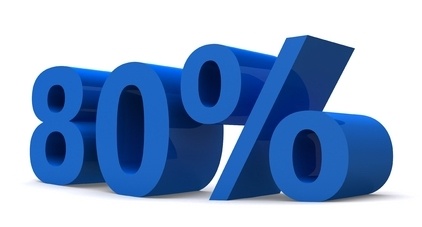High-Low Pricing: How to Create a Bargain Perception
 PriceBeam
·
2 minute read
PriceBeam
·
2 minute read

High-low pricing is a pricing strategy where a company will inflate its manufacturer’s suggested retail price (MSRP) and generate a majority of its revenue from selling the product at a discounted price.
Example: Domino’s Pizza in the UK sells a standard pepperoni pizza at £18 ($22), quite steep for a pizza. However, for the past year, they have granted a 30% discount on all pizzas. Nobody will ever pay £18, making the actual price customers pay: £12.40 or $14.50.
Ultimately, Domino’s “regular price” is completely fictitious and probably much above their customers’ willingness-to-pay, which will also scare some price-sensitive customers that don’t immediately notice the 30% discount. But this pricing strategy creates a bargain perception.
Breaking Down: Bargain Perception
For consumers, money is a scarce resource, and the ultimate goal is to allocate it in a way that will get them the most value. As described in previous blog posts, the price conveys a quality message, and so, the discount implies that you’re getting £18 worth of value at £12.40, and thus, this is a wise purchase. Willingness-to-pay is based on the value the consumer perceives in a product, and this, essentially false, perceived value that high-low pricing adds to a product, will drive up willingness-to-pay. In some cases, the bargain perception is so strong that consumers will buy a product they don’t really need with the sole purpose of getting incredible value at a low price: the deal is simply too good to pass up.
Where High-Low Pricing Becomes High-Risk
In order for a this pricing strategy to create the desired bargain perception, the discount must be perceived as - you guessed it - a bargain. If the product consistently available at a discount, the discounted price will no longer be perceived as a bargain, but an everyday low price (EDLP). Once this happens, the customer’s value perception will be based on the discounted price, and not the “regular price”. This creates two problems. First, barely any products will be sold at the regular price, and the company will lose out on revenue. Second, a discount in itself can damage the quality perception of a product, so while the initial discounted price may have been aligned with the customer’s willingness-to-pay, this willingness-to-pay will decrease once the bargain perception is gone and become lower than the starting point.
Unintentional High-Low Pricing
Many companies use discounts at some point to increase sales, gain market share and get new customers. However, if used too frequently, a part of their customer segment will start only buying at this price and wait for the next bargain, especially with non-perishable products, as these can be stocked. Often, this creates a vicious cycle, as the company will now have to offer these discounts on a regular basis to retain the price-sensitive customers, and consequently tighten their profit margin. Moreover, as this wasn’t intentional, the discounted price is likely to be lower than the customer’s willingness-to-pay and so, the company will inevitably leave money on the table in the beginning, while the willingness-to-pay of the entire customer segment will start decreasing from the regular price to the (suboptimal) discounted price. Before they know it, more than half of their revenue is generated from discounted products and hence, the long-term profitability of the firm is lower.
Summary: Discount with Caution
If using a high-low pricing strategy, you need to take a break from it once in a while or switch between the segments which the discount applies to. For Domino’s that would mean switching between offering student discounts, quantity discounts (for families and large parties) and off-peak discounts. In that way, each segment will still perceive the discount as a bargain.
For companies who don’t intend to use this pricing strategy: Consider whether it is really worth appealing to price-sensitive customers and whether their experience with your product will, in fact, be willing to pay your regular price afterwards.
.png?width=400&height=100&name=PBLogoTransparent%20(1).png)



